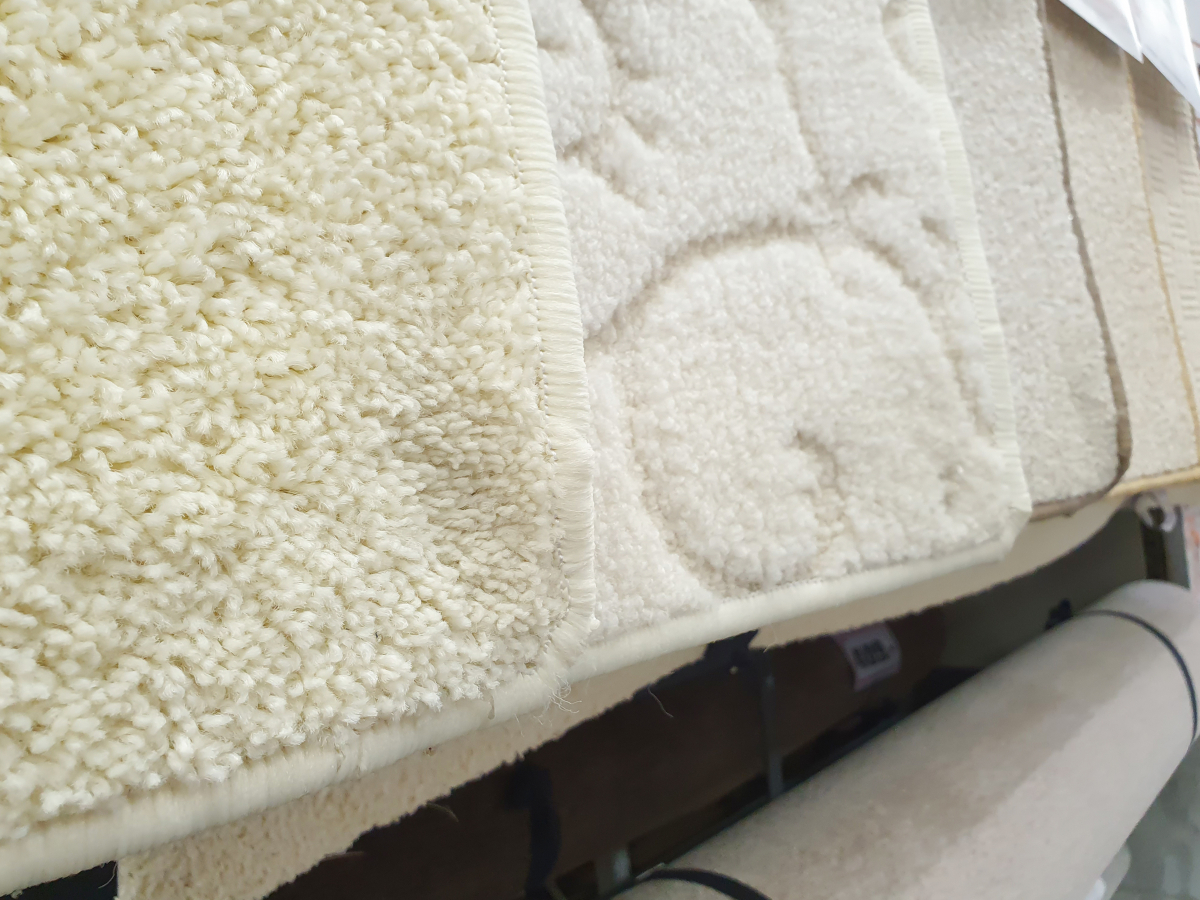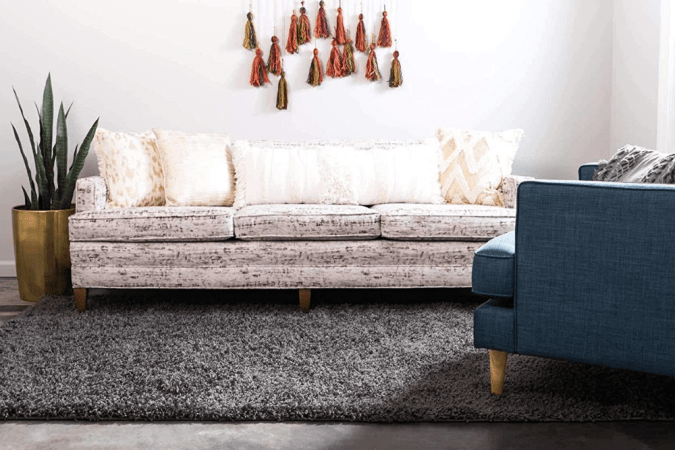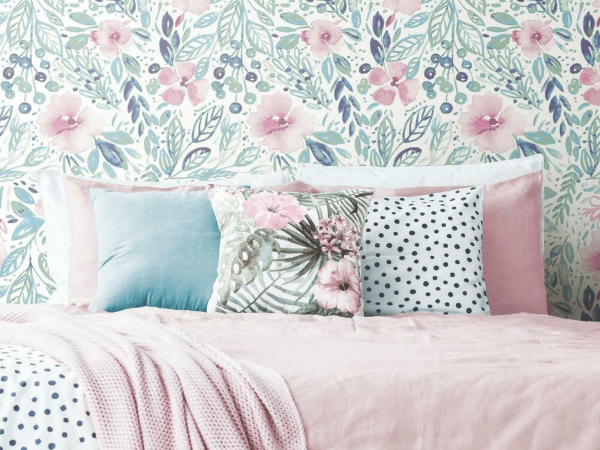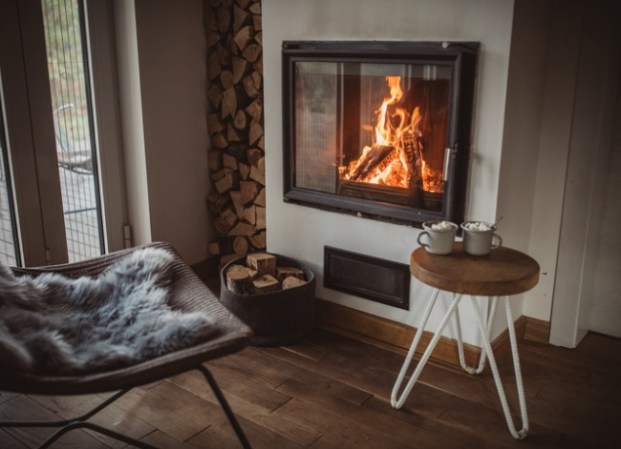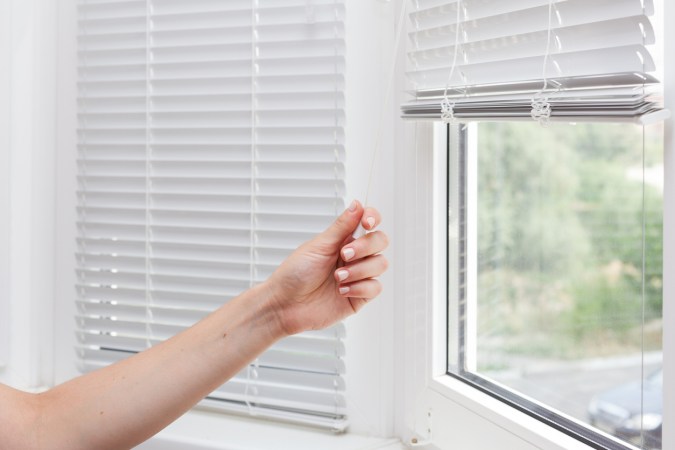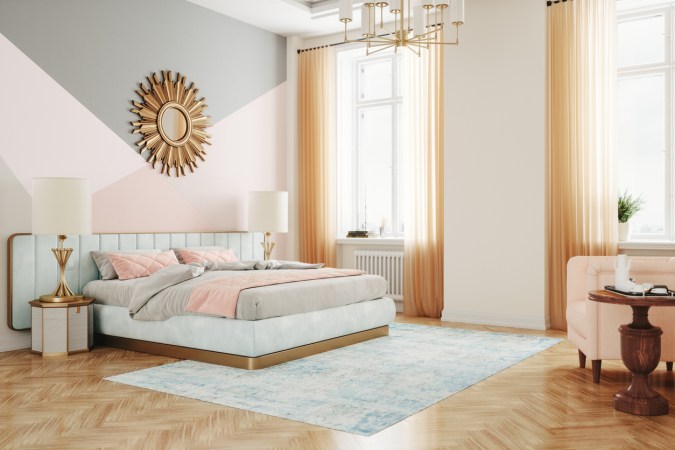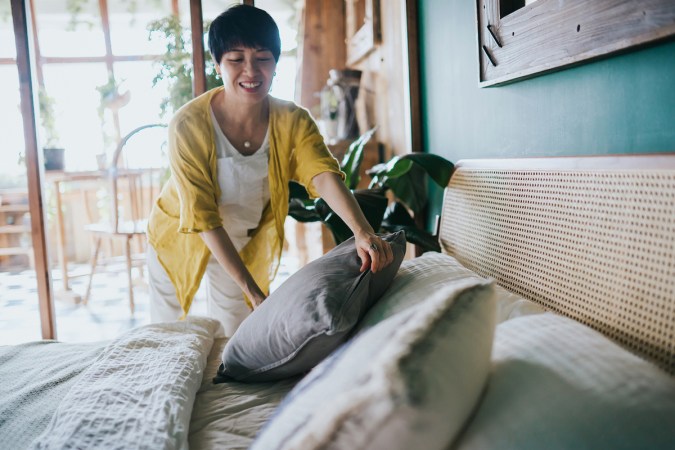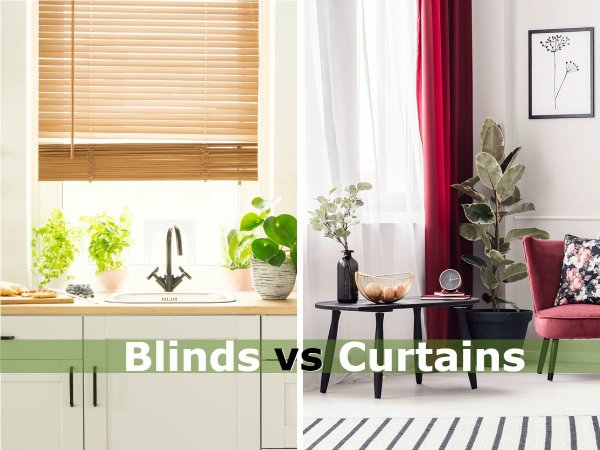We may earn revenue from the products available on this page and participate in affiliate programs. Learn More ›
Upscale designers know a sneaky little home décor trick that can mean the difference between a “ho-hum” abode and a “wow” pad: The secret’s on the floor! Known in the trade as the “fifth wall,” the floor can become a major decorating focal point simply by choosing the right area rug. There are many different types of rugs, in many different constructions, shapes, and sizes, and many different types of rug styles, patterns, and colors. At the same time, choosing the best type of area rug for living rooms naturally is different from choosing the best type of rug for bedrooms. But with a little thought, planning, and research, you can find the perfect rug to suit your style.
RELATED: The Best Rugs for Dining Rooms
Types of Rugs by Material
Area rugs are typically classified by construction, which falls into two broad categories: natural fiber rugs and synthetic fiber rugs.
In the natural fiber category, you’ll find tufted or woven wool rugs, cotton rugs, silk rugs, and rugs made from jute, sisal, seagrass, or bamboo, as well as rugs made from leather or sheepskin. Natural fiber rugs combine beauty with a luxurious feel underfoot and are more sustainable and environmentally friendly, but they’re less durable and resistant to staining and fading as synthetic fiber rugs.
Synthetic rug fibers include polypropylene, nylon, polyester, and acrylic varieties, which offer significant durability and vivid colors that are fade-resistant. Synthetic fiber rugs also resist stains, making them a great choice for dining rooms and kitchens. They’re durable, easier to clean, and resist mold and mildew, ideal for high-traffic areas as indoor/outdoor or entryway rugs. Many synthetic fiber rugs are also machine-washable, which makes them the best type of rug for bathrooms.
Many outdoor rugs are constructed of synthetic fibers, which offer a combination of style, vibrant color, durability, and resistance to fading, mildew, and mold. Some natural fibers, including bamboo, sisal, and hemp, also are used in producing outdoor rugs.
1. Wool
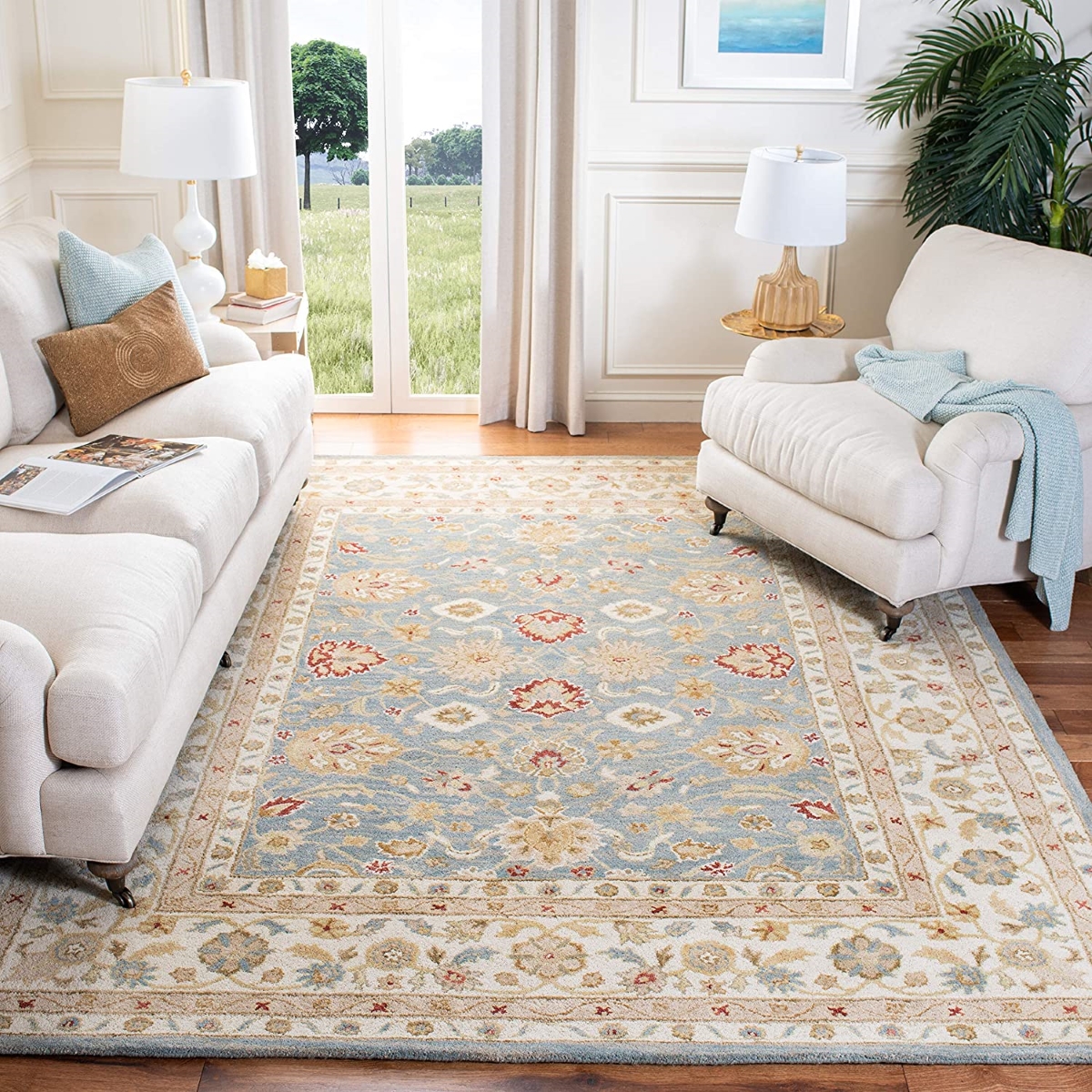
Wool is one of the oldest and most traditional rug materials, and wool rugs are distinguished by their softness, beauty, and durability. Wool is a sustainable natural fiber and is typically hand-woven, hand-loomed, hand-knotted, or hand-tufted. Because of the handcrafted nature of wool rugs, they tend to be more expensive than synthetic fibers. But because they are durable, they will last a lifetime. In fact, many antique and heirloom rugs are made from wool.
Because wool is highly durable, wool rugs can be used virtually anywhere in the home except areas where moisture may be present, such as kitchens or bathrooms; also, wool rugs are typically spot-clean only. Wool rugs are ideal for living rooms, bedrooms, hallways, and stairs.
Best For: Living rooms, bedrooms and hallways.
Our Recommendation: Safavieh Antiquity Collection Hand Tufted Wool Rug on Amazon starting at $388.39
A classic Persian design, this handcrafted rug is destined to become a family heirloom.
2. Cotton
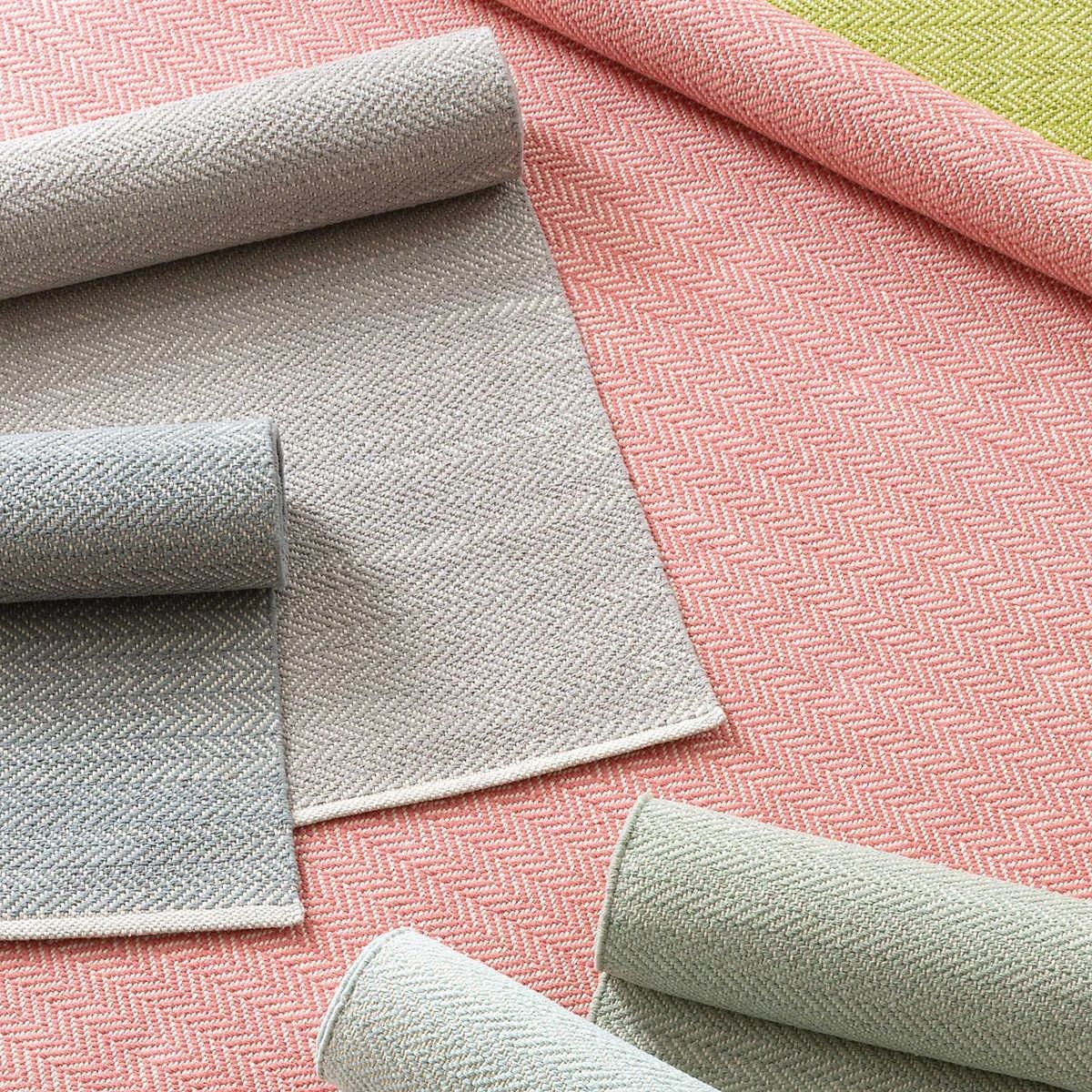
Cotton is another tried-and-true natural fiber that has historically been used to make affordable area rugs. Because cotton is a relatively inexpensive natural fiber, it can be a quality, economical alternative to pricier natural fibers like wool and silk. Cotton is easy to clean and smaller rugs can be machine-washable, which explains why cotton rugs are often used in bathrooms and kitchens.
The downside to cotton is that it can fade rather quickly and is prone to staining. Cotton is also not as durable as some other fibers. Cotton rugs typically have a more casual appearance, so they’re perfect for less formal rooms of the home.
Best For: Casual areas and seasonal decorating.
Our Recommendation: Dash and Albert Herringbone Cotton Area Rug on Wayfair starting at $81
Create a casual, relaxed atmosphere with this simple cotton stunner.
3. Silk
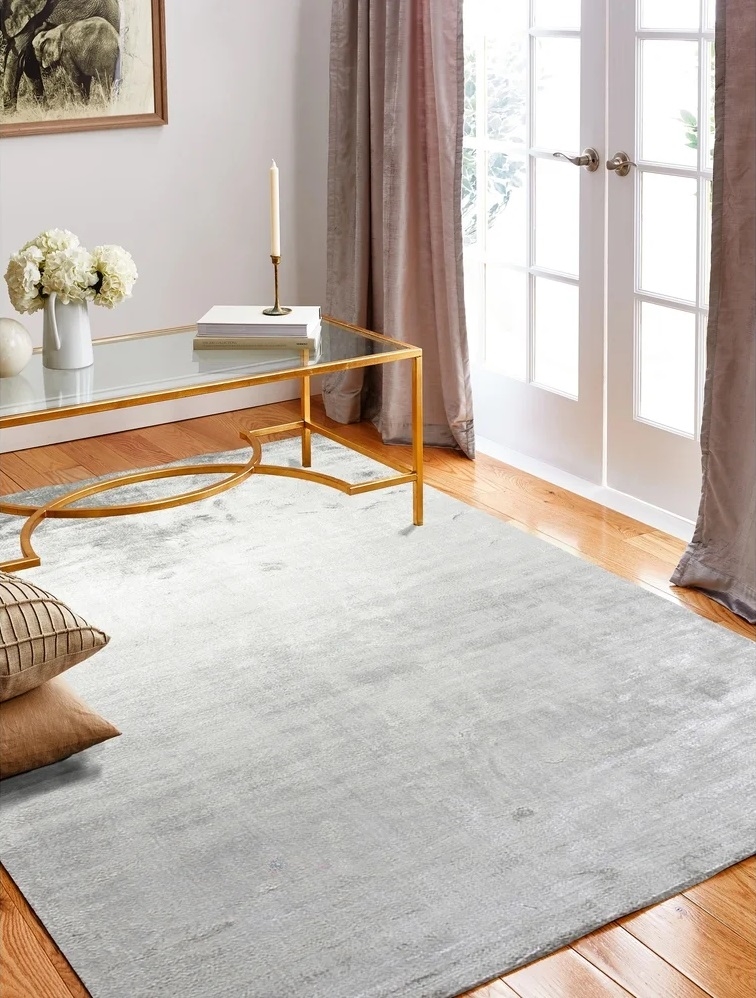
Silk is one of the most luxurious and expensive natural fibers used in area rugs. Silk rugs are characterized by sheen and softness; it is said that nothing shines quite like silk. Silk fibers take color beautifully, so it’s no surprise that silk rugs are known for their rich colorations and elegant designs. It’s also a sustainable fiber and an environmentally friendly option.
The main downside to silk is that it is extremely fine and delicate. Silk rugs are best used as statement pieces in areas that don’t get a lot of traffic. Silk rugs are difficult to clean properly, often requiring professional cleaning services that specialize in silk.
Best For: Accents or statement pieces in low-traffic spaces.
Our Recommendation: Bashian Calypso Contemporary Hand-Loomed Area Rug on Overstock starting at $177.19
Capture the luxury and sheen of silk with this elegant, neutral-toned rug.
4. Jute, Sisal, Seagrass, or Bamboo
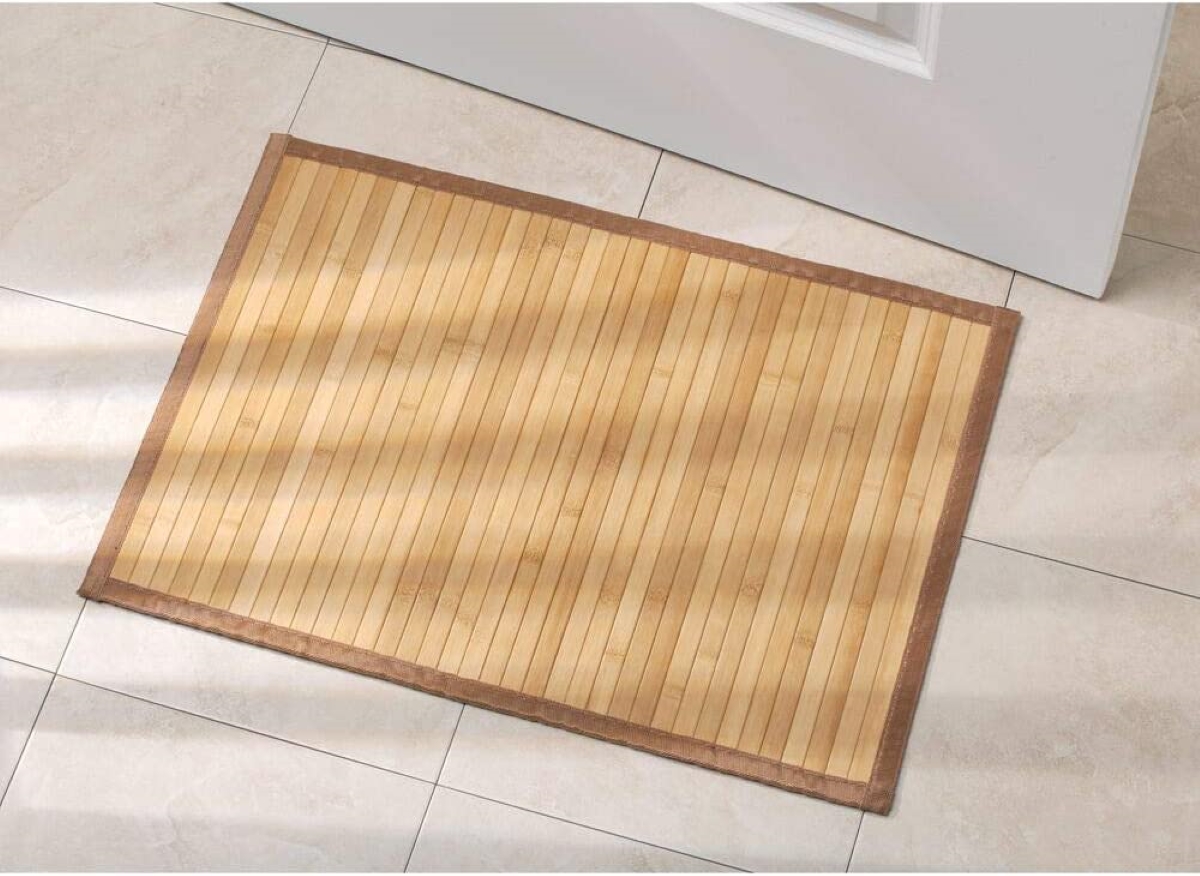
Jute, sisal, seagrass, and bamboo are natural plant fibers, all of which are sustainable and eco-friendly. Rugs made from these fibers are soft underfoot and have a casual or coastal vibe, and they’re suitable for interior and exterior use. If you choose one of these natural fibers for an outdoor rug, make sure that it has been treated with a preservative to prolong its life.
One downside to these plant-based natural fibers is that they’re subject to fading and may not be as durable as synthetic or other natural fibers. These rugs also tend to absorb water, unless treated with a water repellent, and therefore can be susceptible to mold and mildew.
Best For: Casual or coastal decor.
Our Recommendation: iDesign Formbu Bamboo Floor Mat starting at $17.99
Naturally water-resistant, this bamboo mat is a practical choice for kitchens, bathrooms, entryways, and mud rooms.
5. Polypropylene
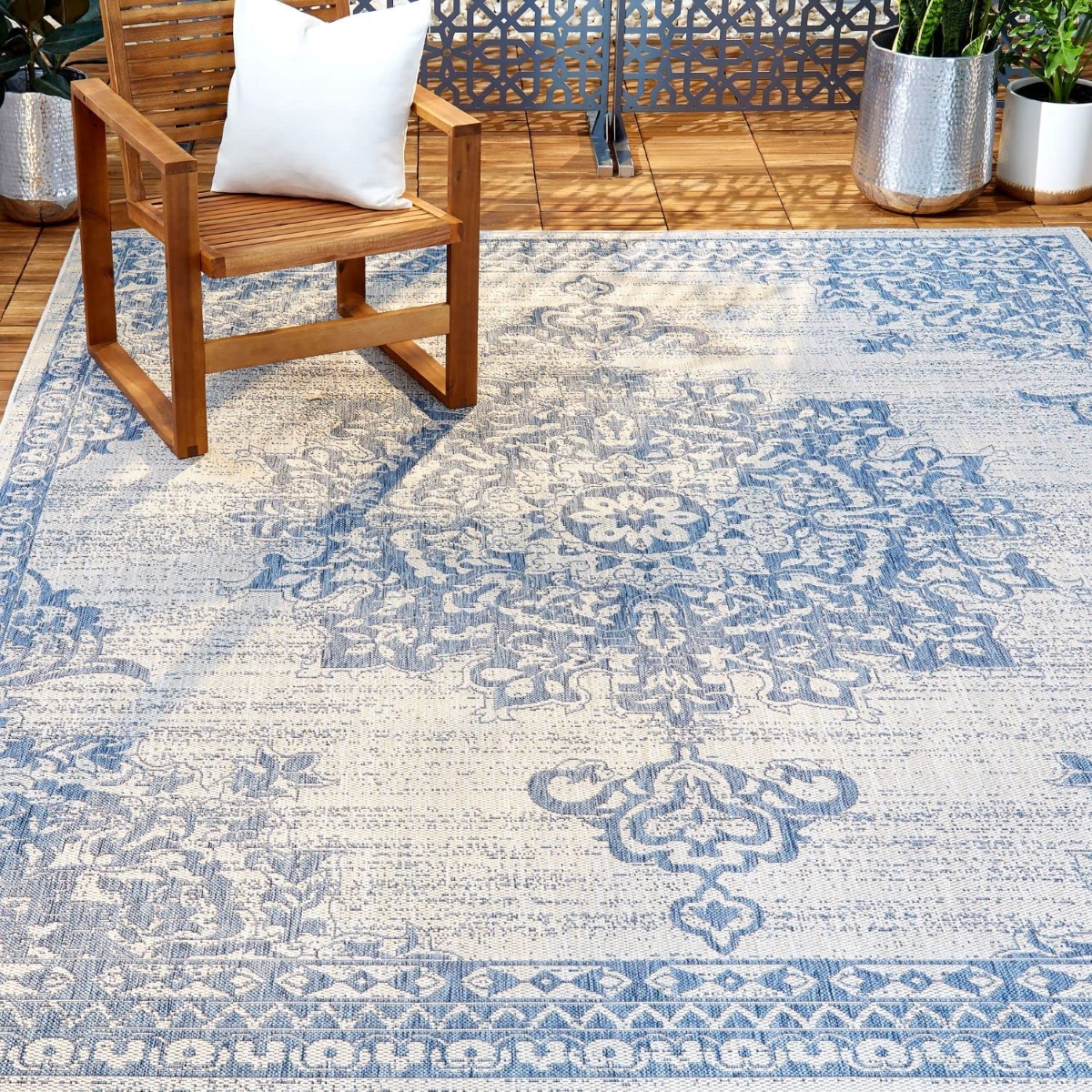
One of the most popular synthetic fibers for area rugs is polypropylene, a budget-friendly and durable alternative to natural fibers. Polypropylene is a solution-dyed fiber, which means it is extremely colorfast and highly resistant to fading and staining. Polypropylene rugs are durable, can be cleaned with water or bleach, and don’t absorb liquid for mold and mildew resistance. Many are also constructed using recycled plastic, making them more ecologically sound than some other synthetic fibers (although not exactly sustainable).
Best For: Decorating outdoor and high-traffic areas on a budget.
Our Recommendation: Nicole Miller Patio Country Indoor/Outdoor Area Rug on Amazon starting at $15.86
Combine beauty with durability in this attractive indoor/outdoor selection.
6. Nylon or Polyester
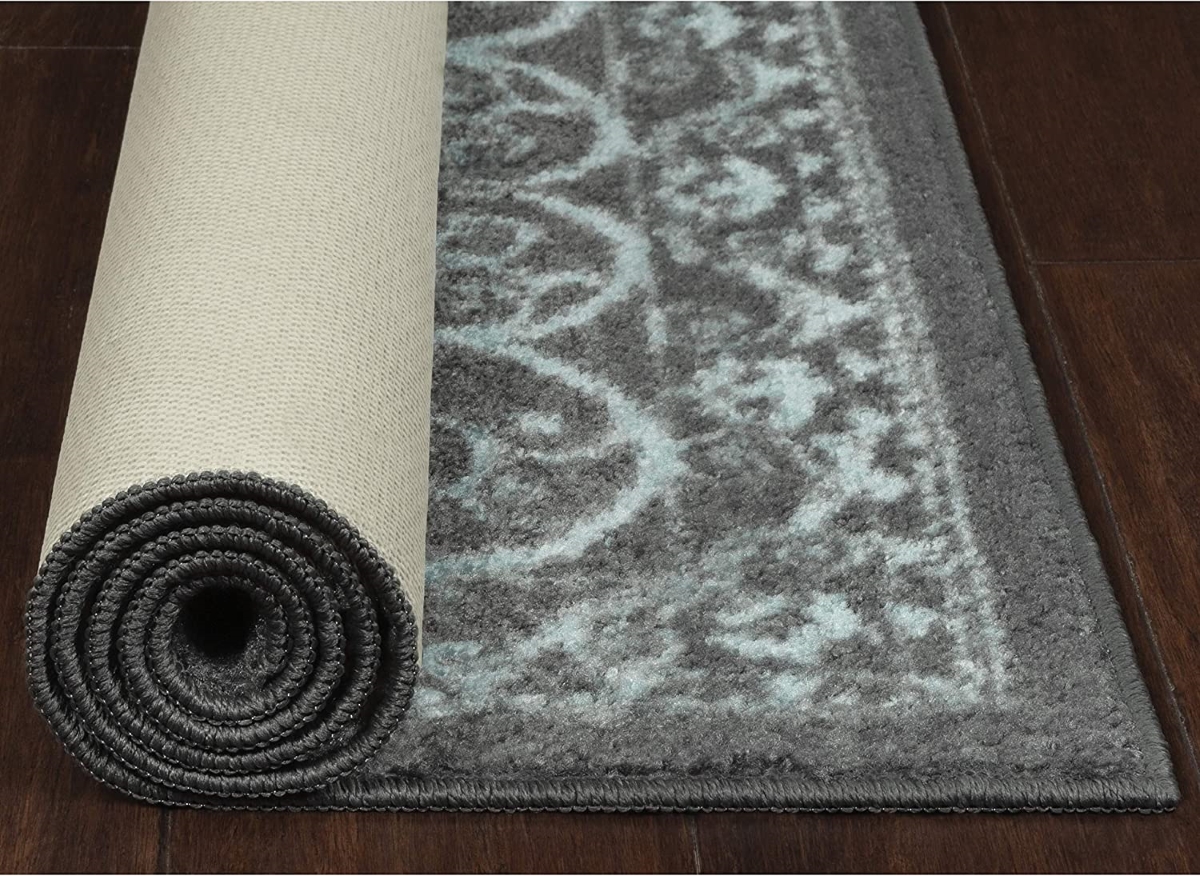
Two other synthetic fibers are extremely popular for use in area rugs: nylon and polyester. Rugs made from these fibers are typically inexpensive, colorfast, stain-resistant, and easy to clean. They are not as durable, however, as some other fibers. Nylon rugs get hot in the sun and tend to show dirt easily, while polyester rugs can become matted down in high-traffic areas and are prone to shedding or pilling. Because these fibers are man-made and don’t degrade, they are not an eco-friendly choice.
Best For: Adding a quick pop of color.
Our Recommendation: Maples Rugs Pelham Vintage Rug on Amazon starting at $10.64
Sturdy and stylish, this polyester rug will deliver reliable performance for many years.
7. Acrylic
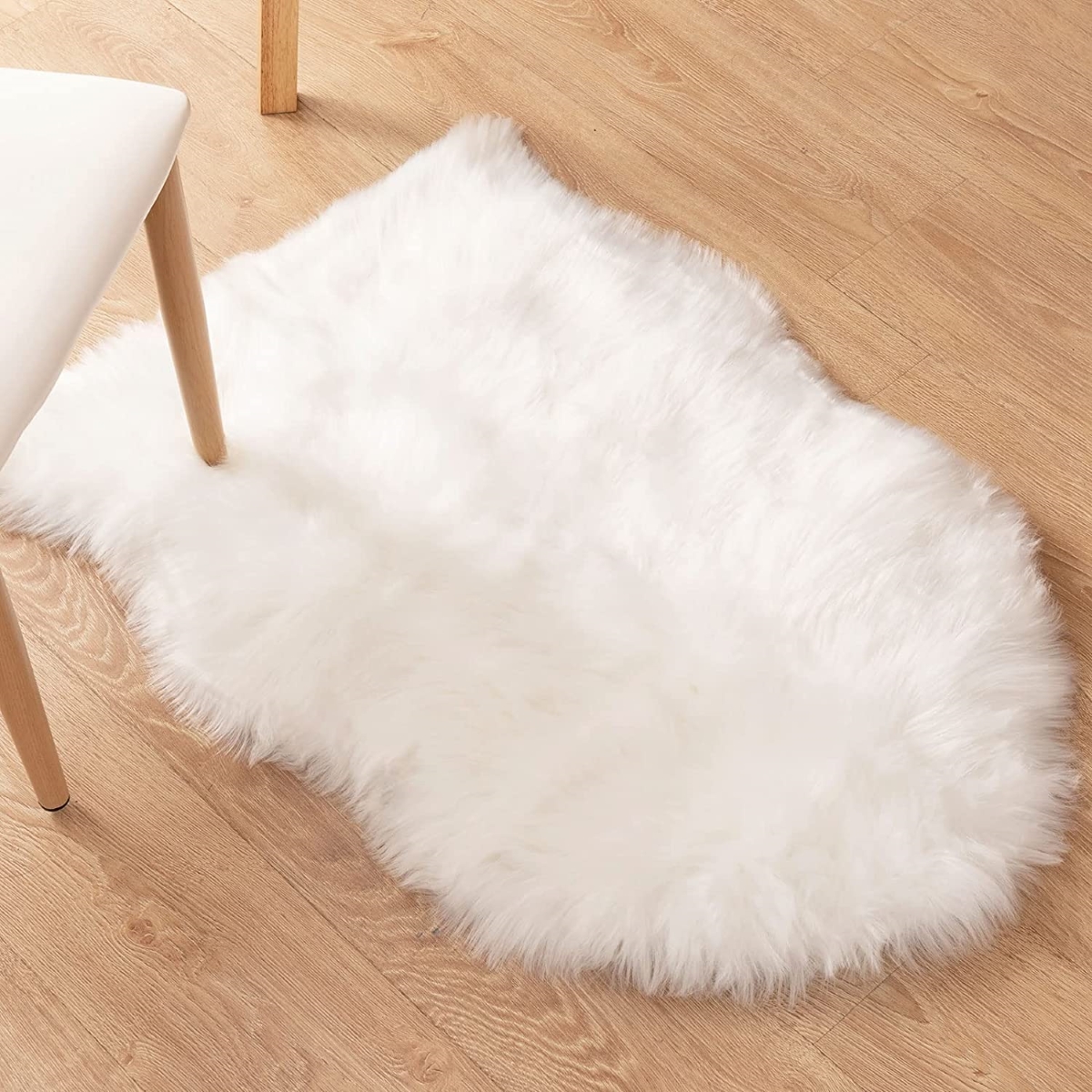
Another synthetic fiber used in area rugs is acrylic, which is often used to mimic the appearance of natural fibers. Acrylic is soft and silky, which gives it a pleasing appearance; the material also feels great underfoot. Acrylic is more expensive than other synthetic fibers, but not as expensive as most natural fibers.
Acrylic dyes well, resists fading, staining, mold, and mildew, and is easy to clean. However, rugs made from acrylic are not as durable as other synthetic fibers, and the fibers can become matted down or pill in high-traffic areas.
Best For: Having the appearance of natural fibers without the cost.
Our Recommendation: Carvapet Luxury Soft Faux Sheepskin Rug on Amazon starting at $19.99
Capture the look of fluffy sheepskin in an easy-care, budget-friendly synthetic fiber.
Types of Rugs by Construction Method
The earliest varieties of area rugs were all handmade, and many of the more expensive and luxurious rugs today are hand-woven, knotted, tufted, hooked, or carved. But there are also a variety of attractive and stylish machine-made rugs available today, including jacquard woven styles, machine-woven, and machine-tufted varieties.
One of the big considerations with construction methods is whether you want flat or fluffy. The height and density of rug fibers is known as the pile, and pile can be either looped or cut. Most area rugs are made of looped pile, in either handmade or machine-made weaves. Cut pile, so-named because the tops of the loops are sheared off, is typically used in wall-to-wall carpeting. There are also rugs called “no-pile” rugs, also known as flat-woven or flat-weave rugs.
Pile height falls into three main classifications. High-pile rugs (½-inch to ¾-inch thick) are the thickest and considered the most comfortable for bedrooms and living rooms, but they can become matted down and show signs of wear in higher traffic areas. Medium-pile rugs (¼-inch to ½-inch thick) combine comfort and durability for a good all-purpose selection. Low-pile rugs (less than ¼-inch thick) or no-pile rugs are more durable and are therefore the best type of rug for kitchens, stairs, hallways, and entryways. There are also ultra-high-pile rugs, commonly called shag rugs, that have pile heights of 1 to 2 inches thick. Shag rugs are the fluffiest type of rug, but they’re generally considered more decorative and less durable than the rest.
1. Flat Woven
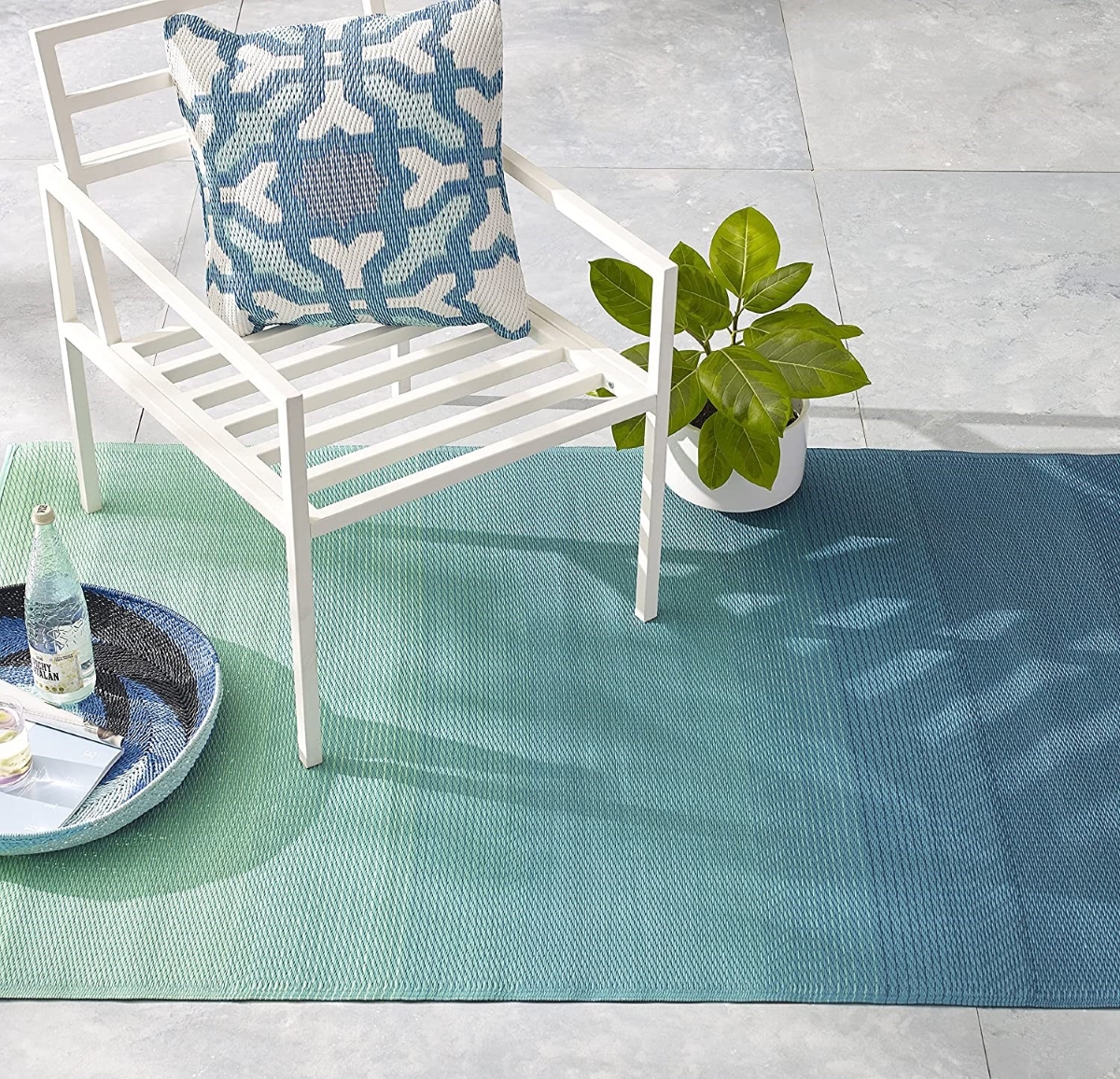
Flat woven or flat weave rugs are sturdy, durable woven rugs with virtually no pile or very low pile. Flat woven rugs are offered in a variety of styles, including traditional Indian dhurries, Turkish kilims, cable braids, flat braids, corded-and-stitched constructions. Flat woven rugs have no backing, so they are reversible. These rugs are easy to clean and ideal for high-traffic areas and busy households with children and pets. Flat woven rugs are often the best type of rug for dog hair, for instance, because the fibers release the hair easily with a quick vacuum.
Flat woven rugs are constructed of a variety of both natural and synthetic fibers, and are offered in a huge variety of colors and patterns. Traditional flat woven rugs often feature geometric or stylized natural designs.
Best For: Outdoors, high-traffic areas, and busy households.
Our Recommendation: Fab Habitat Cancun Outdoor Rug on Amazon starting at $57.99
Get extra texture and extra wear out of this recycled accent rug.
2. Hand-Tufted
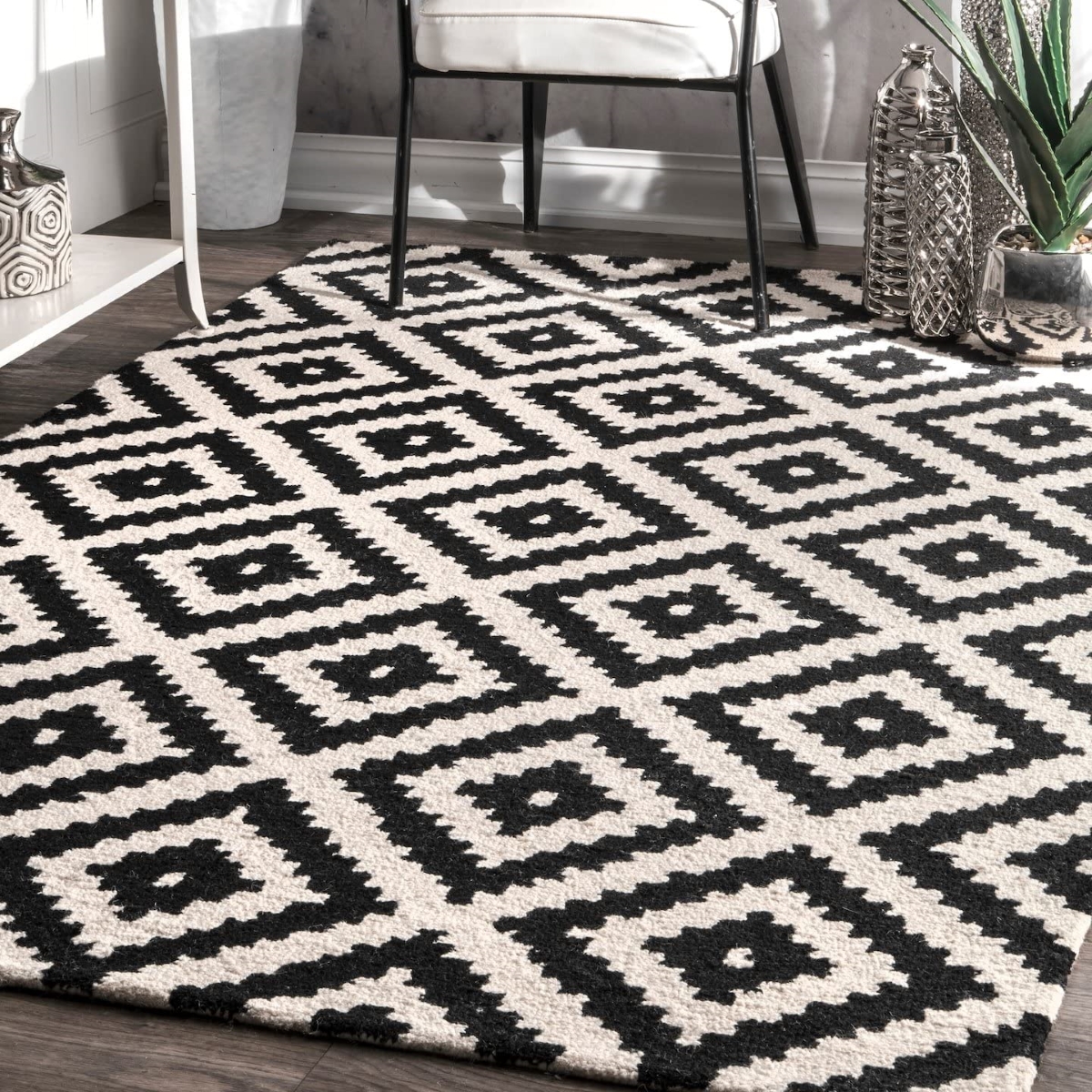
Hand-tufted rugs are created using a tufting gun, loaded with individual threads, which are then pushed through a canvas backing to create the design. Once the entire rug has been tufted, a latex or similar coating is glued to the backing to hold the fibers in place. The fibers are trimmed to create an even pile and a smooth, soft surface, which creates a comfy, cushiony feeling underfoot. Many hand-tufted rugs are crafted from wool, although synthetic fibers are sometimes used.
Hand-tufted rugs are intricate and beautiful but are more decorative than durable; they are not suitable for high-traffic areas and will come apart if cleaned too vigorously.
Best For: Bedrooms and other low-traffic spaces.
Our Recommendation: Nuloom Kellee Wool Rug on Amazon starting at $29.39
Add a modern vibe to your space with this wool rug’s geometric design.
3. Hand-Knotted
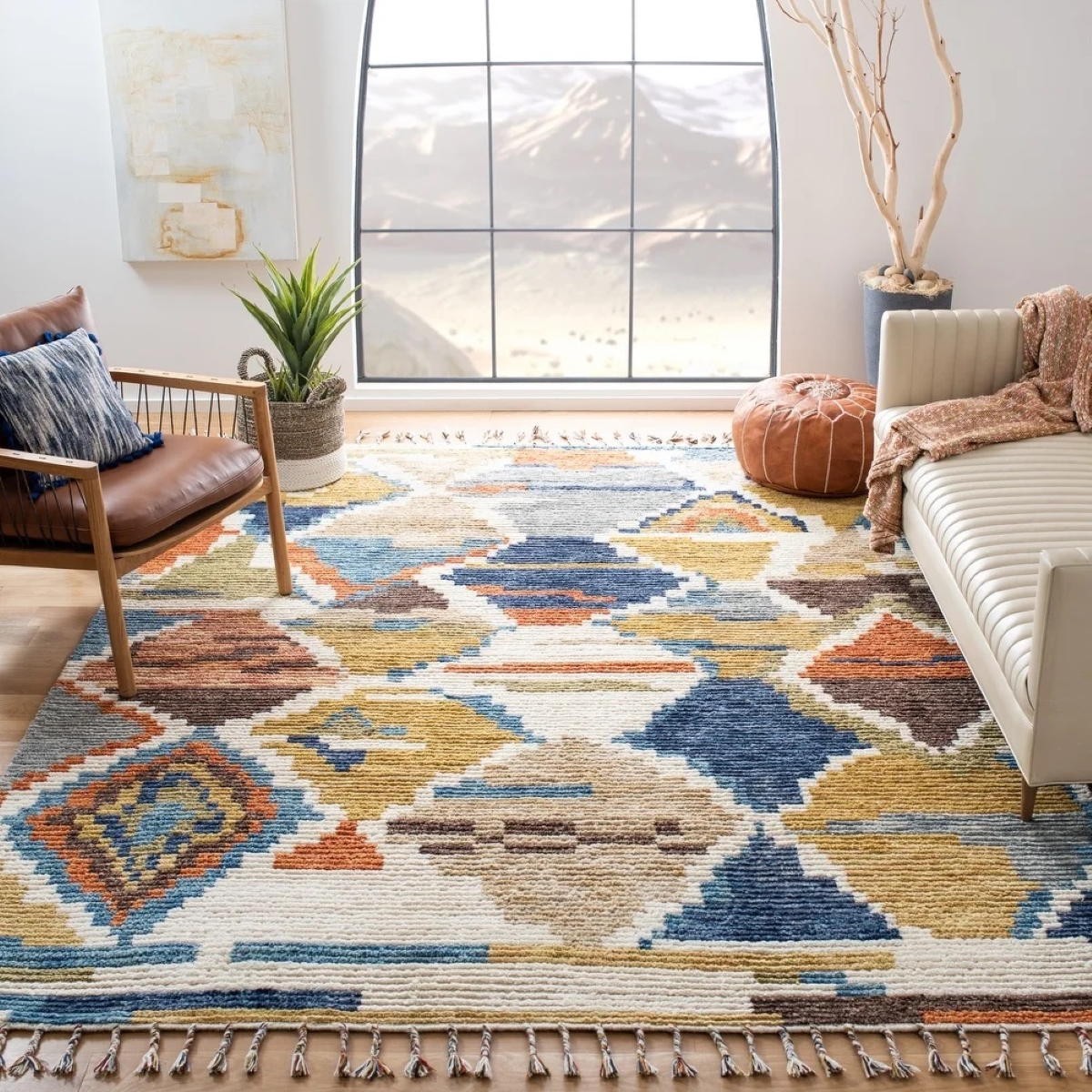
Hand-knotted rugs represent the oldest type of rug construction and are truly unique, one-of-a-kind handicrafts. Hand-knotted rugs are constructed using a large loom fitted with vertical warp threads and horizontal weft threads; the rugs are created by hand tying rows of knots along the warp and weft. Since the hand-knotted design is on both sides of the rug, they are truly reversible.
A measure of quality for hand-knotted rugs is the number of knots per square inch: the more knots, the better quality, more intricate the design, and higher the price. Because hand-knotted rugs are works of art, they carry a hefty price tag and are best used in low-traffic areas and as statement pieces.
Best For: Accent pieces in low-traffic areas.
Our Recommendation: Safavieh Hand-knotted Kenya Collection Multicolor Rug on Overstock starting at $410.97
This colorful rug is a vibrant and artful statement piece.
4. Hand-Hooked
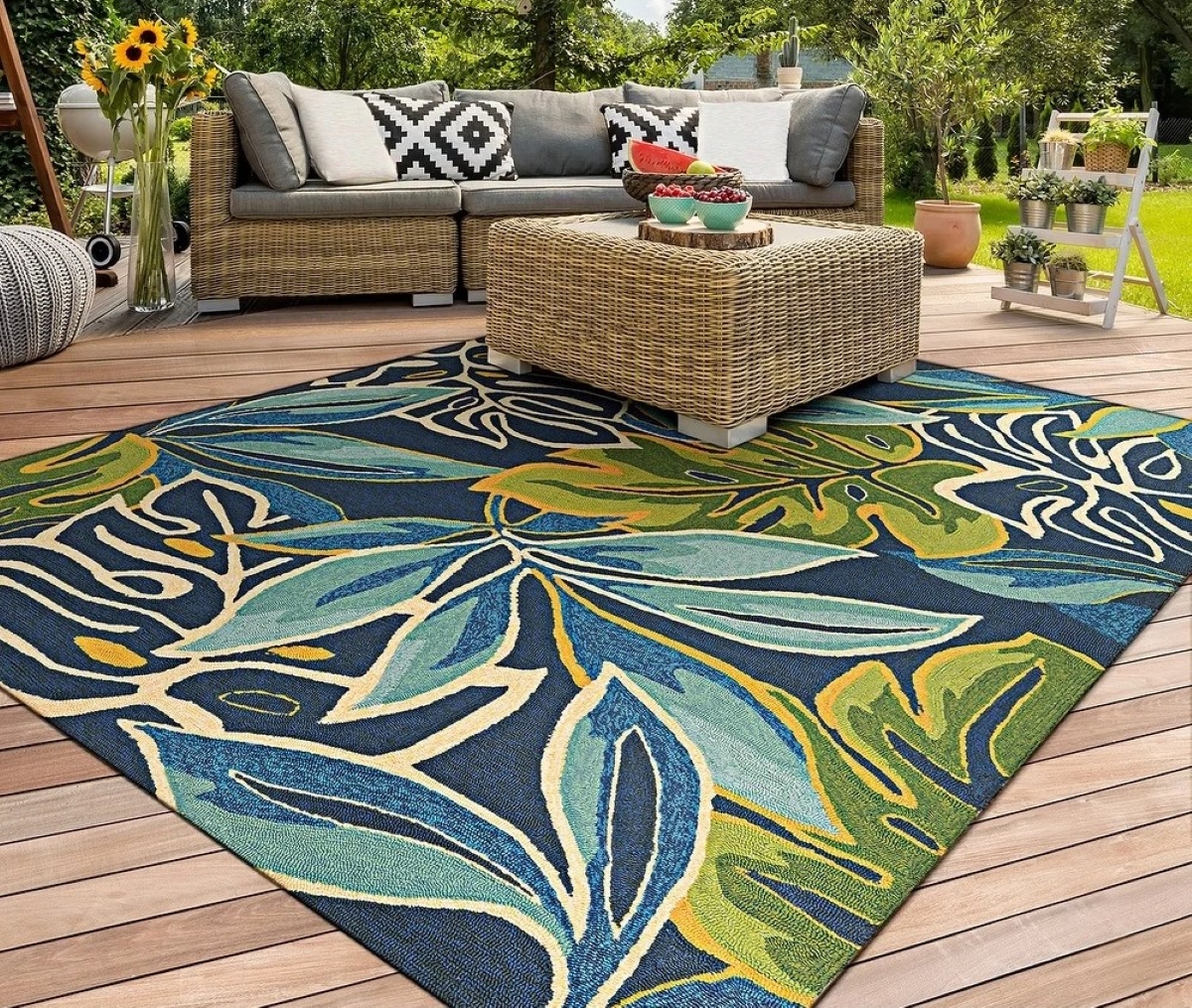
Another traditional handcrafted rug is a hand-hooked construction. Hand-hooked rugs are created by pulling small loops of fiber through a canvas to create a soft, knobby texture. After the fibers are all pulled through the canvas, a protective backing is applied to keep the fibers in place.
Hand-hooked rugs are often constructed of wool or other natural fibers, although sometimes synthetic fibers can be used. Because these are handmade, hand-hooked rugs are fairly pricey. Unlike some other handcrafted styles, however, hand-hooked rugs are fairly durable and long-lasting.
Best For: Adding a traditional look to any décor.
Our Recommendation: Miami Palms Hand-Hooked Botanical Indoor/Outdoor Area Rug on Overstock starting at $58.42
Heat things up a bit with this stylish and bold tropical design.
5. Jacquard Woven
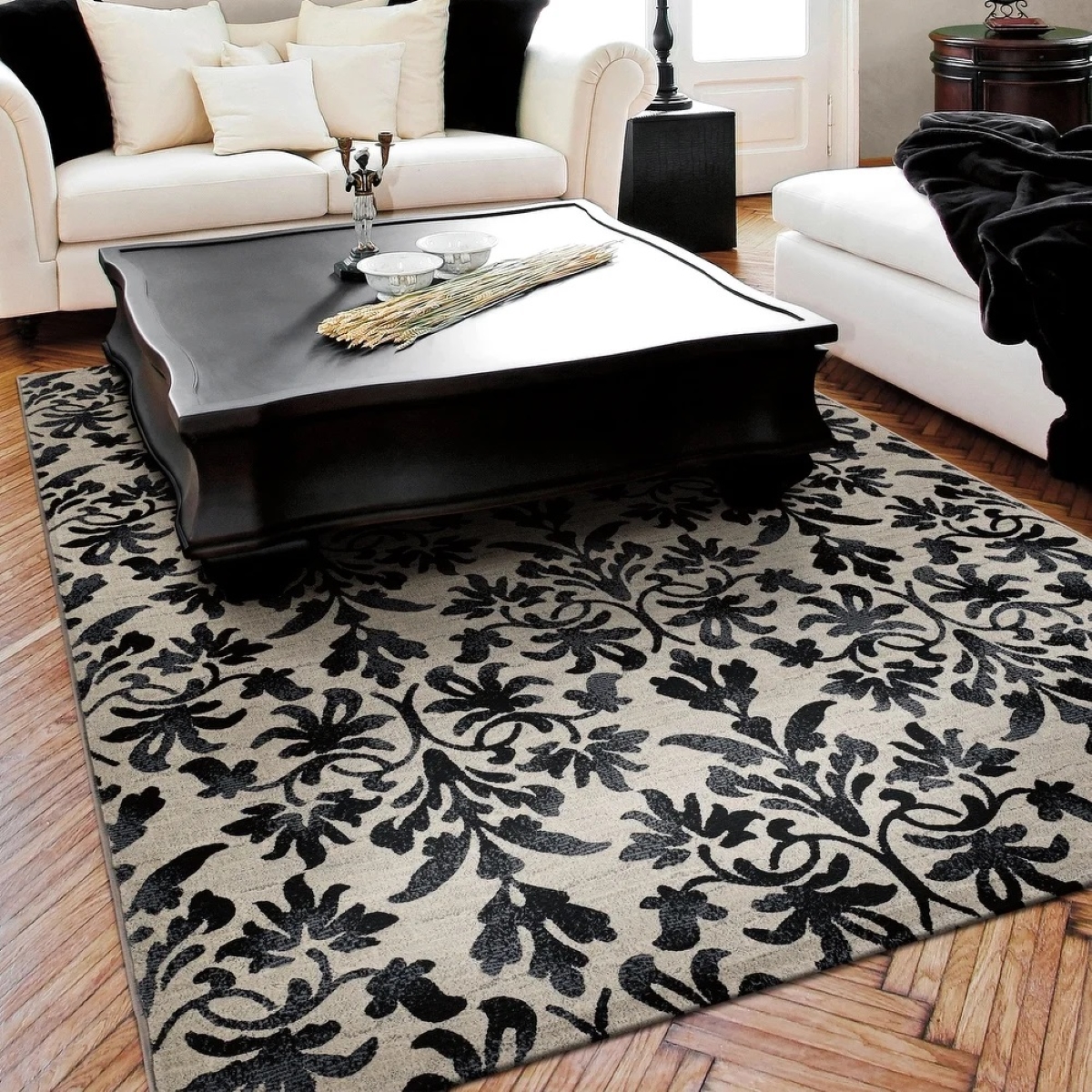
A special type of weaving machine creates jacquard woven rugs, which are distinguished by their unique type of weaves, including brocades, matelasses, and dobbies. These complicated woven patterns are intricate and highly patterned, creating a textural effect that adds depth and richness to a room at an affordable price.
Jacquard woven rugs can be found in virtually any construction, using natural fibers, synthetic fibers, or blended fibers. Because the rugs are machine-made, they are an extremely durable and sensible choice for high-traffic areas.
Best For: Budget-friendly style in high-traffic areas.
Our Recommendation: Delta Classic Jacquard Gray-Black Area Rug on Overstock starting at $53.67
Get the look of a fine handmade creation with the performance and durability of a machine-made rug with this classic jacquard woven pattern.
6. Machine-Made
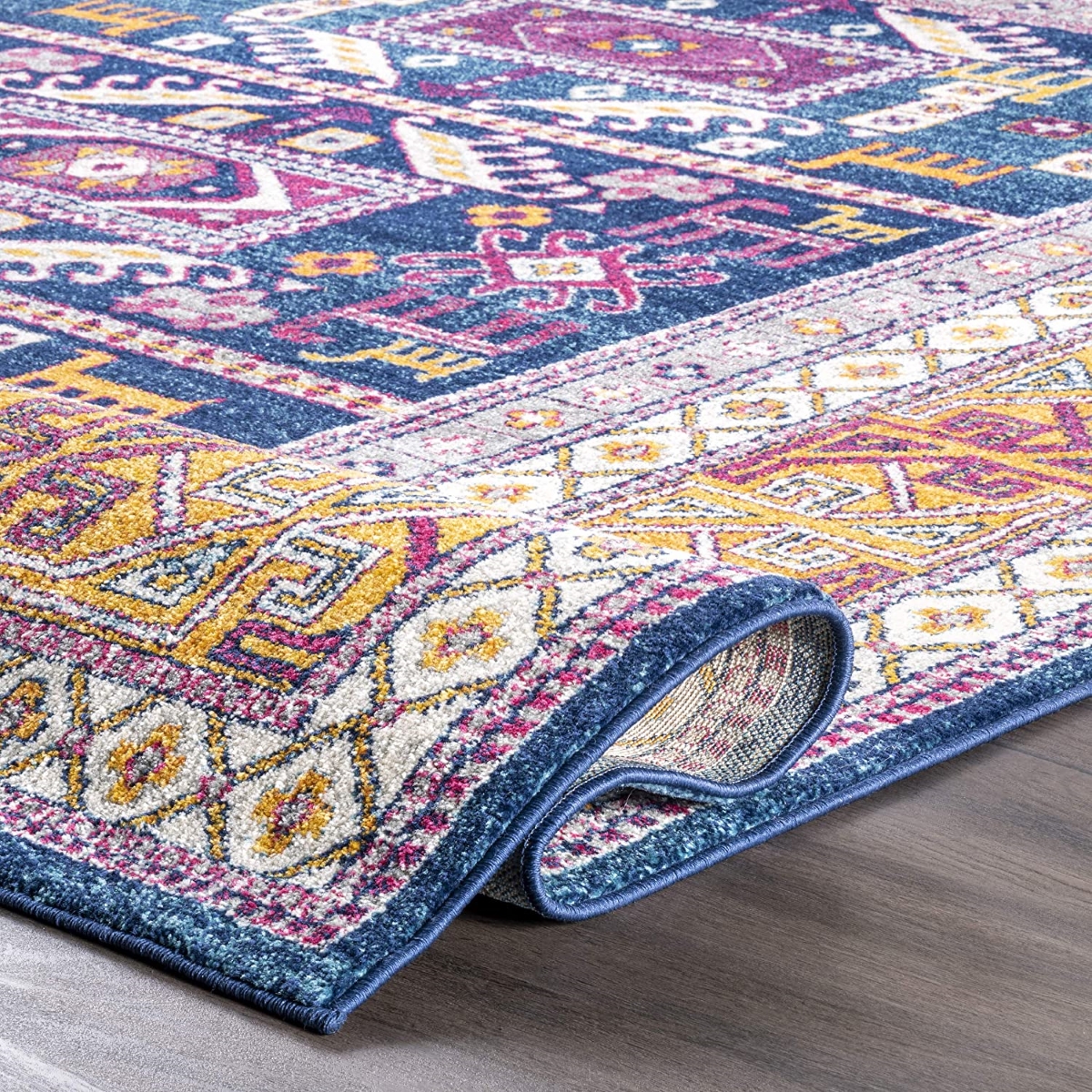
Machine-made rugs are affordable and durable and come in virtually any pattern, style, shape, size, or color. As the name suggests, machine-made rugs are woven on power looms and feature uniform height piles and serged or bound edges. Most machine-made rugs are made from synthetic fibers, which makes them easy to clean, stain-resistant, and fade resistant.
Machine-made rugs are some of the most popular rugs available today, due to the nearly endless variety and low prices.
Best For: Sturdy and affordable alternatives for virtually any space.
Our Recommendation: Nuloom Marisela Tribal Area Rug on Amazon for $94.68
Colorful style pairs with durability and easy care in this kid- and pet-friendly area rug.
7. Shag
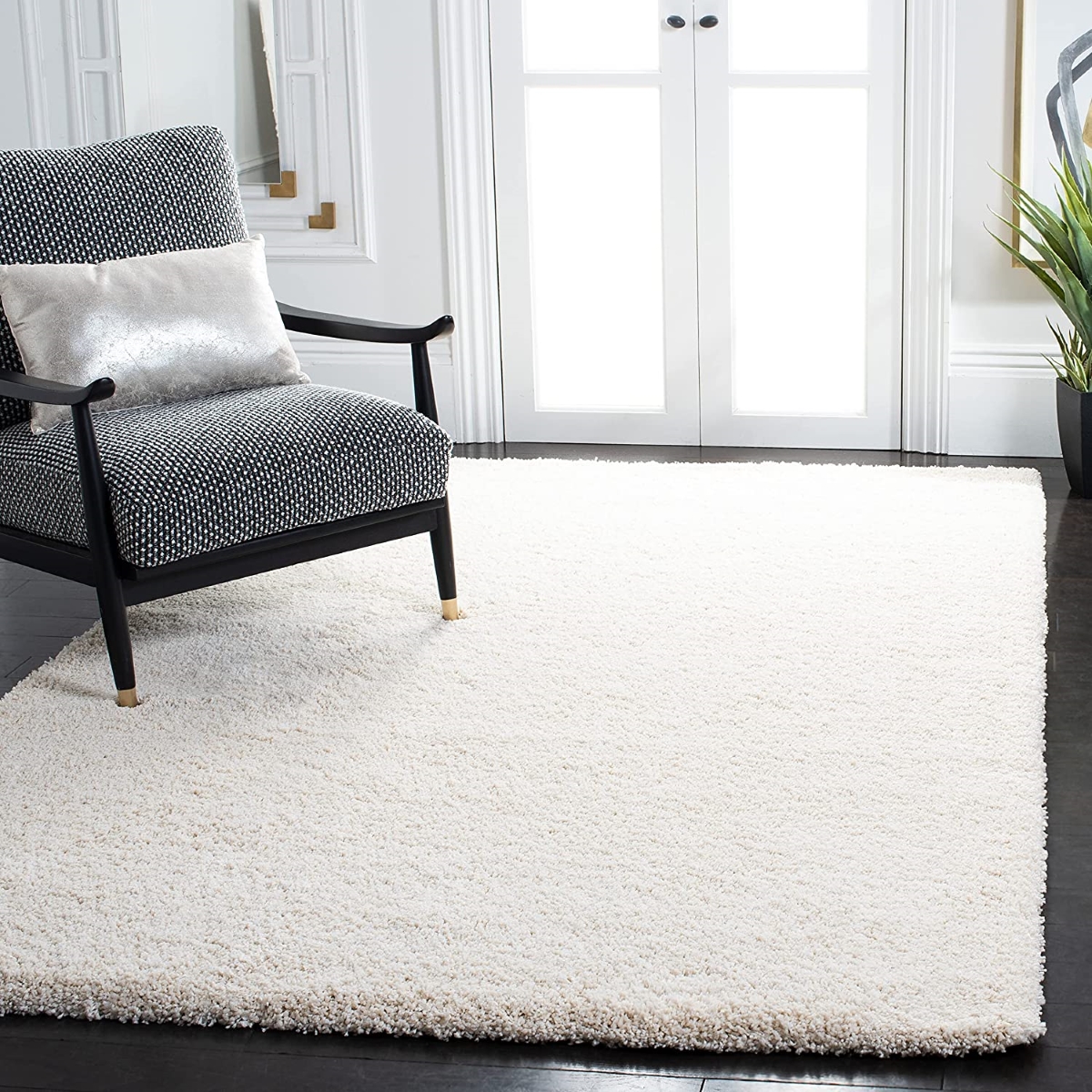
Bring back the ‘70s, baby! Shag rugs were a staple of bedrooms and living areas back in the disco era, and they’ve made a comeback. Shag rugs are characterized by ultra-long fiber piles, giving them a “shaggy” or fluffy appearance. Shag rugs are thick, cushiony, and feel soft and luxurious underfoot.
Shag rugs are made of both natural and synthetic fibers, although synthetic shag is more common. Shag rugs are highly decorative but not very durable, so they require a bit of TLC when it comes to cleaning. There are even rug rakes that you can use to fluff up shag pile when it becomes matted down.
Best For: Bedrooms, living rooms, and family rooms.
Our Recommendation: Safavieh Milan Shag Collection Area Rug on Amazon for $221.90
Bring some soft and cushy comfort to your floors with this retro construction.
Rug Design Considerations
No matter what your space or decorating style, there is an area rug out there that will give your room the perfect finishing touch. Keep several “rules” in mind when shopping for a rug—namely pertaining to size, shape, color, and pattern.
Size
An area rug is meant to accent the floor, but not conceal it entirely. Typically, when selecting the size of an area rug, measure the room dimensions and subtract one foot from each side: for example, if your room measures 10 feet by 12 feet, you should purchase a rug measuring 8 feet by 10 feet, which is a very common size. Other common sizes of area rugs include 9 feet by 12 feet; 16 feet by 20 feet; 5 feet by 8 feet; 3 feet by 5 feet; and 2 feet by 4 feet.
When selecting a rug for smaller spaces such as kitchens, bathrooms, hallways, and entryways, you may want to go with smaller sizes. Some rugs are available in sizes as small as 1½ feet by 2 feet.
Shape
The majority of area rugs are rectangular, but a variety of specialty shapes are available, purpose-built for specific applications. Round and oblong rugs are often used to add visual interest to large rooms. Hallways, entryways, and stairways often use runners, which are long, narrow rugs that travel the center of the area. Kitchens sometimes feature a “slice” rug, shaped like a half moon to go in front of the kitchen sink. And bathrooms might use shaped rugs that are designed to go around the contours of a toilet.
Color
Area rugs are offered in a rainbow of hues, including today’s most fashionable tones. Some of the most versatile colors are neutral shades, such as beige, taupe, gray, and blue. White and ivory are also available, but are not as popular due to the fact that they show dirt and stains. Bold colors can be used to make a statement, and fashion shades can brighten up the darkest corner. Most decorators advise choosing rug colors that are complementary to the colors used in a room’s paint and upholstery.
Pattern
Shoppers will find a tremendous variety of patterns and designs in rugs. Traditional styles include Middle Eastern, Asian, and African-inspired designs. Geometric patterns and stripes are popular, as are nature-influenced designs like leaves, florals, and tropical looks. Large-scale medallion styles are prevalent, as well as small-scale repetitive motifs. Coastal patterns are very popular, featuring shells and sea life. Novelty patterns and licensed designs are popular for children’s rooms and playrooms. Textural, heathered, and tone-on-tone patterns are also trendy.
RELATED: The Best Rug Pads Tested by Bob Vila’s Experts
Important Rug Maintenance Tips
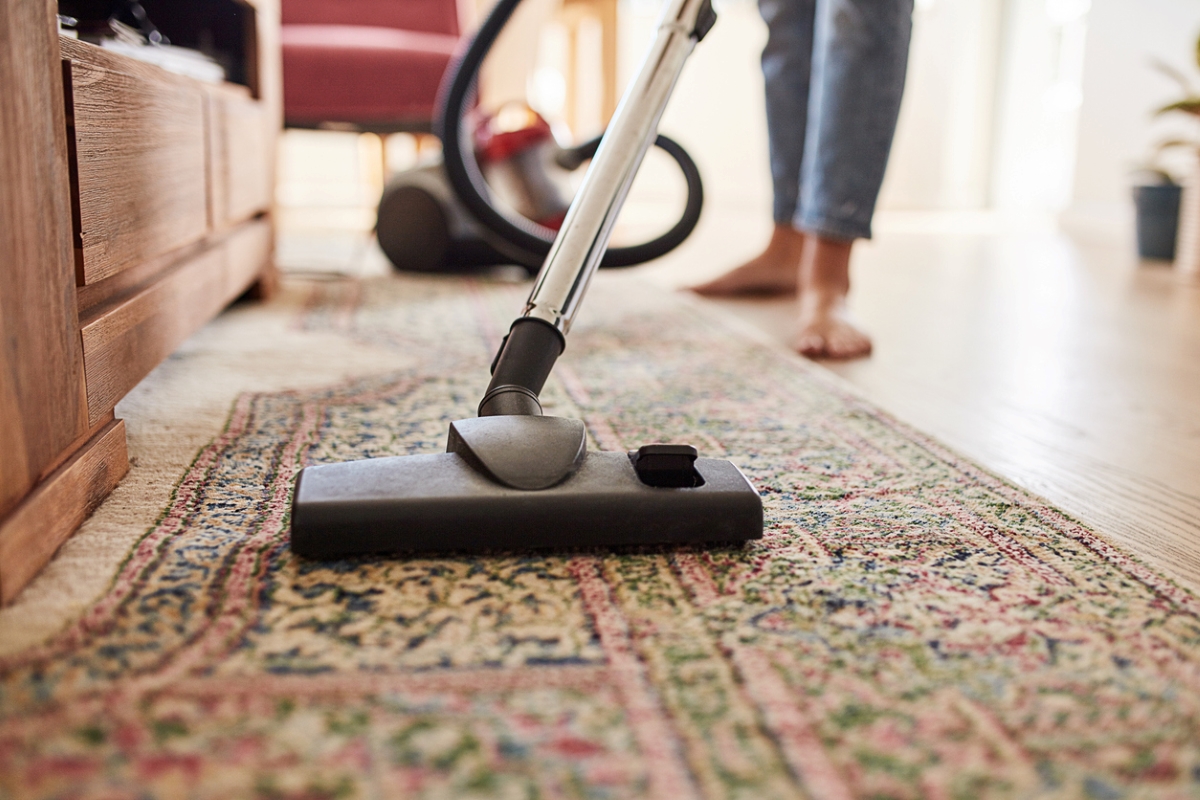
A rug is an investment and—like any other home investment—needs proper care and maintenance in order to maximize its useful life. The first place to start is with your initial purchase: Buy your rug from a reputable retailer to ensure you get quality merchandise, as many rugs are sold with limited warranties.
The next consideration should be what’s underneath the rug rather than on top of it. Place a rug pad under your rug to provide extra cushioning and prevent it from slipping. There are several types of rug pads available, including felt, natural rubber, natural latex, memory foam, or PVC; most come in a variety of thicknesses and densities. Some rug pads are specifically designed to create a non-skid surface, while others are simply there to provide extra cushion and minimize wear.
Once you’ve placed your rug in just the right spot, institute a regular cleaning routine to help keep rugs looking their best. The following are tips and tricks on how to clean a rug, and these simple guidelines will help rugs last for years.
- Buy rugs from a reputable retailer.
- Place rug pads underneath your rugs.
- Vacuum rugs regularly. Most area rugs should be vacuumed weekly, although households with pets and children may want to vacuum more frequently.
- Blot—don’t rub—spills promptly. Use baking soda to soak up oil- or grease-based spills; use absorbent microfiber cloths to soak up liquid spills.
- Clean rug stains as soon as possible, following the manufacturer’s instructions for what type of stain remover is suitable for the rug fibers. Some fibers are best cleaned with plain water; others can be cleaned with a mild detergent. Always test an inconspicuous area of the rug first.
- Smaller rugs are often machine-washable; check the manufacturer’s instructions to be sure.
- Smaller rugs can be shaken outside and beat lightly with a tennis racket or broom handle to loosen embedded dust and dirt.
- Many indoor/outdoor carpets made of synthetic fibers can be rinsed with plain water from a garden hose. Use a soft-bristled scrub brush on heavily soiled areas. Follow the manufacturer’s guidelines.
FAQs About Different Types of Rugs for the Home
There are many different types of area rugs on the market today, in a huge range of constructions, fibers, shapes, and sizes. The sheer variety can be overwhelming, and some of the terminology might be confusing. Following are some things you might need to know before shopping for an area rug.
Q. What type of rug shows the least wear?
A machine-made area rug constructed of synthetic fibers is probably the most durable construction, followed by a machine-made wool rug. A flat woven rug with no pile or a low-pile rug will last the longest.
Q. What are the different textures of rugs?
There are many different types of textures in rugs. These include plush pile, a soft and luxurious cut-pile carpet, so named because the yarn loops are cut to a uniform height; textured plush, where the loops are cut at different heights to create a pattern; frieze pile, constructed from short, tightly twisted yarns; level loop pile, leaving the yarn loops intact; Berber loop pile, which features loops of slightly different lengths for a textured appearance; jacquard woven textures; flat woven, no- or low-pile rugs; and ultra-high-pile rugs, or shag rugs, which have long, “shaggy” fibers.
Q. What kind of rug is the softest?
Silk fibers are the softest rug material; shag rugs are the softest construction.
Q. What is a rug with no pile called?
A no-pile or low-pile rug is known as a flat woven or flat weave rug.
Q. What type of rug is popular now?
Machine-made area rugs constructed of synthetic fibers are the most popular area rugs today, although classic wool rugs never go out of style.
The prices listed here are accurate as of publication on November 30, 2022.

